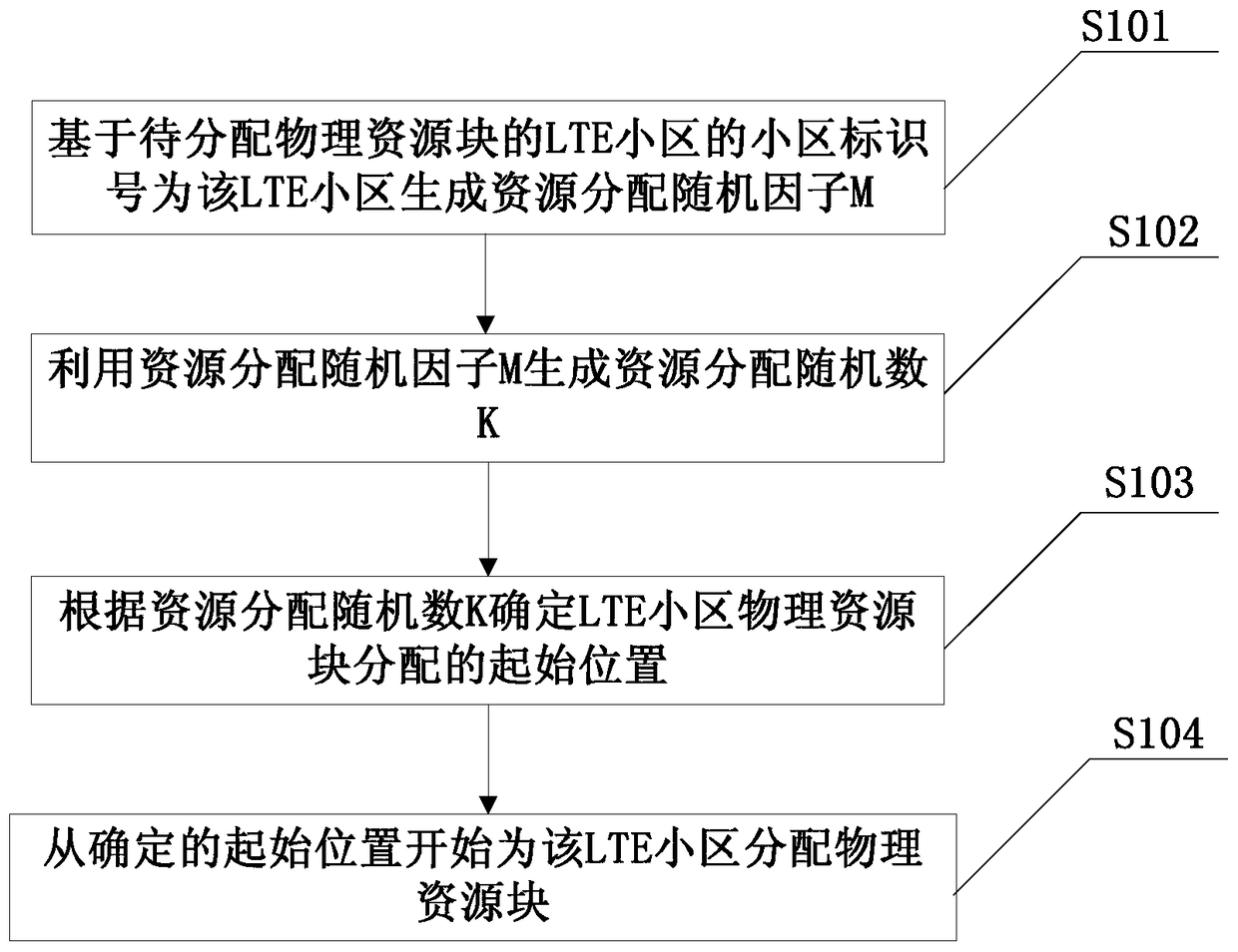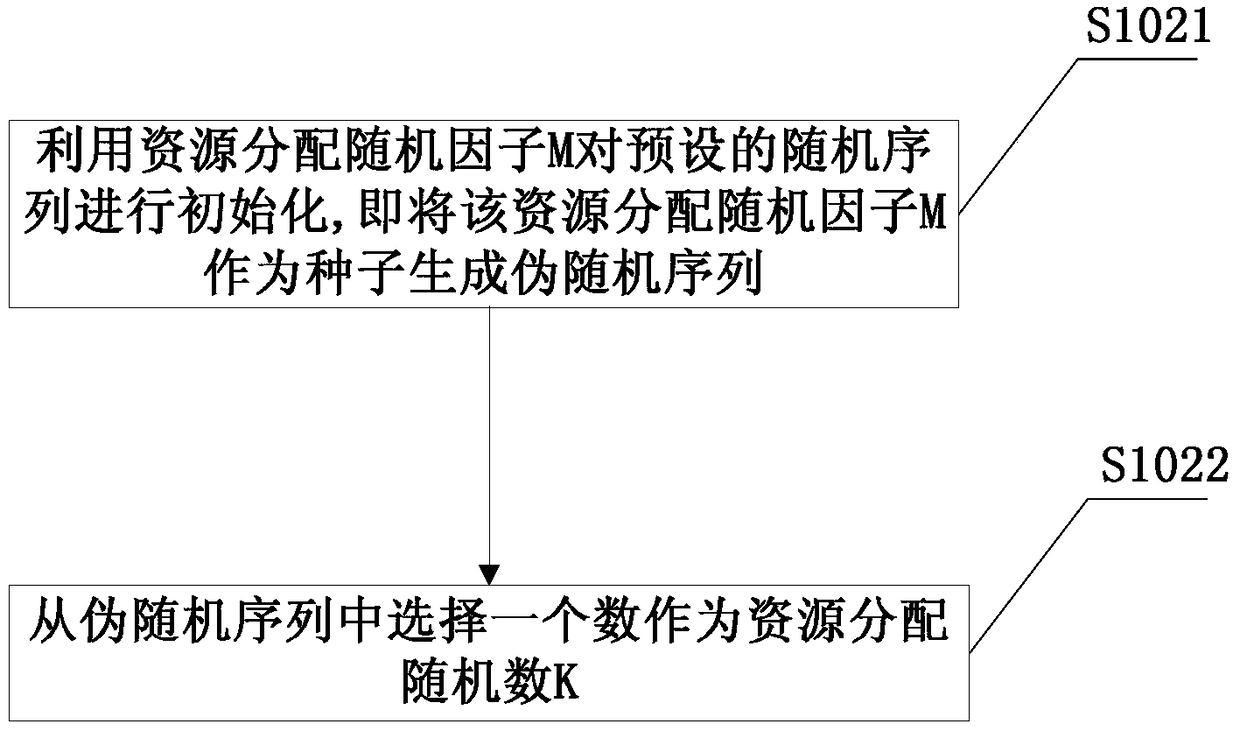Resource allocation method, device and base station of LTE cell
A resource allocation device and resource allocation technology, applied in the direction of transmission path separation, distributed allocation, payload allocation, etc., can solve the problem of overlapping use of resource blocks, improve satisfaction, improve performance, and reduce mutual interference The effect of probability
- Summary
- Abstract
- Description
- Claims
- Application Information
AI Technical Summary
Problems solved by technology
Method used
Image
Examples
Embodiment 1
[0069] For the resource allocation method of the LTE cell provided in this embodiment, please refer to figure 2 shown, including:
[0070] Step 101: Generate a resource allocation random factor M for the LTE cell based on the cell identification number of the LTE cell to which the physical resource block is to be allocated;
[0071] Step 102: Using the resource allocation random factor M to generate a resource allocation random number K, the generated resource allocation random number K is greater than or equal to 0 and less than or equal to N1-N2, where N1 is the total number of physical resource blocks corresponding to the system bandwidth of the LTE system, and N2 The total number of physical resource blocks currently required to be scheduled for the LTE cell;
[0072] Step 103: Determine the starting position of LTE cell physical resource block allocation according to the resource allocation random number K;
[0073] Step 104: Allocate physical resource blocks for the L...
Embodiment 2
[0103] For the resource allocation device of the LTE cell provided in this embodiment, please refer to Image 6 As shown, it includes a random factor generation module, a random number acquisition module, a location determination module and a resource allocation module, wherein:
[0104] The random factor generating module is used to generate a resource allocation random factor M for the LTE cell based on the cell identification number of the LTE cell of the resource to be allocated;
[0105] The random number acquisition module is used to generate a resource allocation random number K by using the resource allocation random factor M, the resource allocation random number K is greater than or equal to 0, and is less than or equal to N1-N2, and N1 is the total number of physical resource blocks N1 corresponding to the system bandwidth of the LTE system , N2 is the total number of physical resource blocks currently required to be scheduled by the LTE cell;
[0106] The position...
Embodiment 3
[0124] This embodiment provides a base station, please refer to Figure 8 As shown, it includes a memory and a processor; the memory is used to store at least one program module, and the processor is used to perform the following steps based on at least one program module:
[0125] Generate a resource allocation random factor M for the LTE cell based on the cell identification number of the LTE cell to be allocated resources;
[0126] The resource allocation random number K is generated by using the resource allocation random factor M, the resource allocation random number K is greater than or equal to 0, and is less than or equal to N1-N2, N1 is the total number of physical resource blocks N1 corresponding to the system bandwidth of the LTE system, and N2 is the current state of the LTE cell The total number of physical resource blocks that need to be scheduled;
[0127] Determine the starting position of physical resource block allocation for the LTE cell according to the r...
PUM
 Login to View More
Login to View More Abstract
Description
Claims
Application Information
 Login to View More
Login to View More - R&D
- Intellectual Property
- Life Sciences
- Materials
- Tech Scout
- Unparalleled Data Quality
- Higher Quality Content
- 60% Fewer Hallucinations
Browse by: Latest US Patents, China's latest patents, Technical Efficacy Thesaurus, Application Domain, Technology Topic, Popular Technical Reports.
© 2025 PatSnap. All rights reserved.Legal|Privacy policy|Modern Slavery Act Transparency Statement|Sitemap|About US| Contact US: help@patsnap.com



